The Japanese Tea Ceremony: Authentic Matcha Experiences in Kyoto, Tokyo & Beyond
10/01/2025
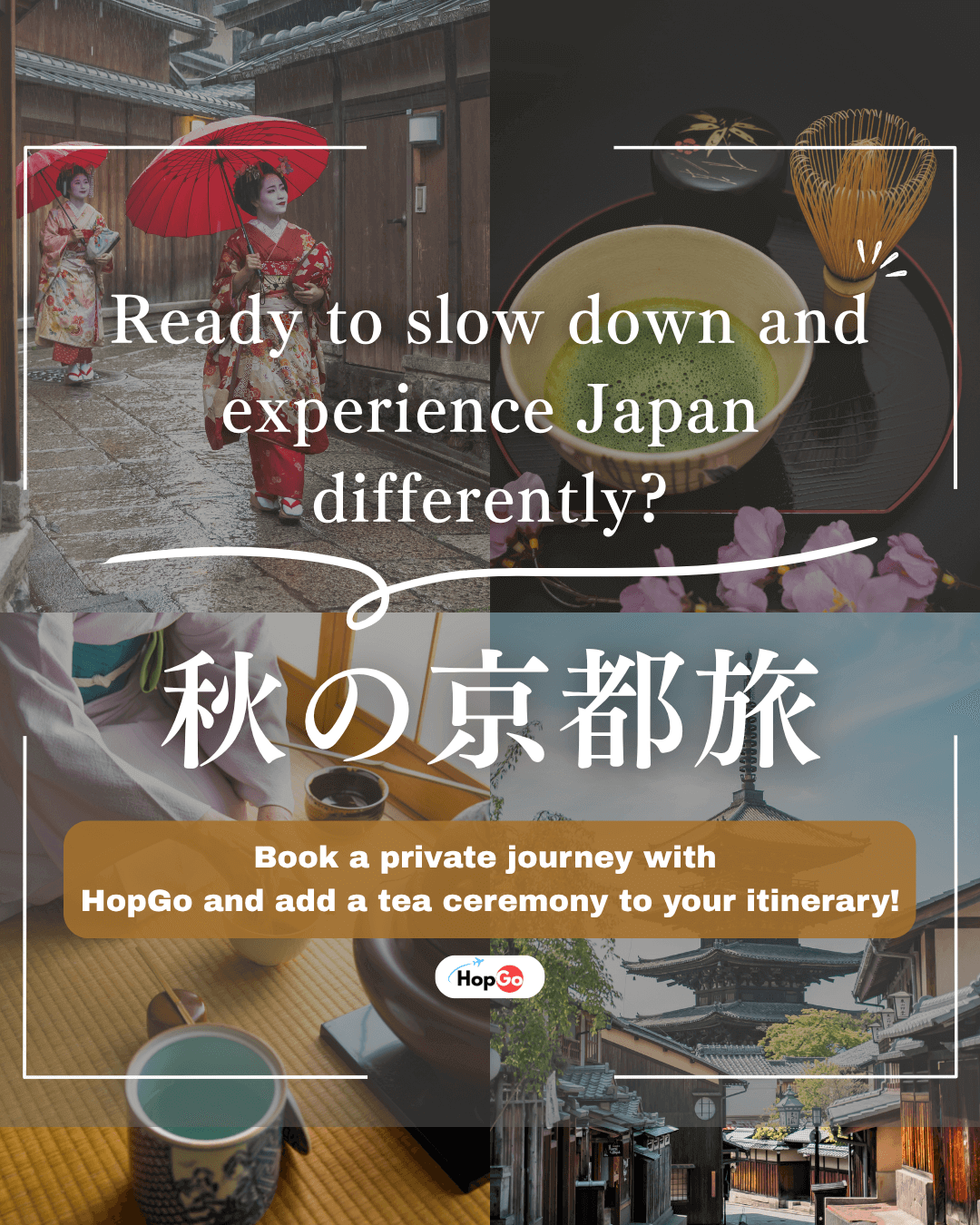
Why Experience the Tea Ceremony During Your Trip?
When exploring Japan, it’s not only the bustling cities or the famous landmarks that leave lasting memories — often it’s the quiet, meaningful moments. One of the most authentic ways to step into Japanese culture is through the Tea Ceremony (sado / chado).
More than “drinking tea,” it is a ritual refined over centuries, an expression of heartfelt hospitality, and an experience that lets you see Japan with new eyes.
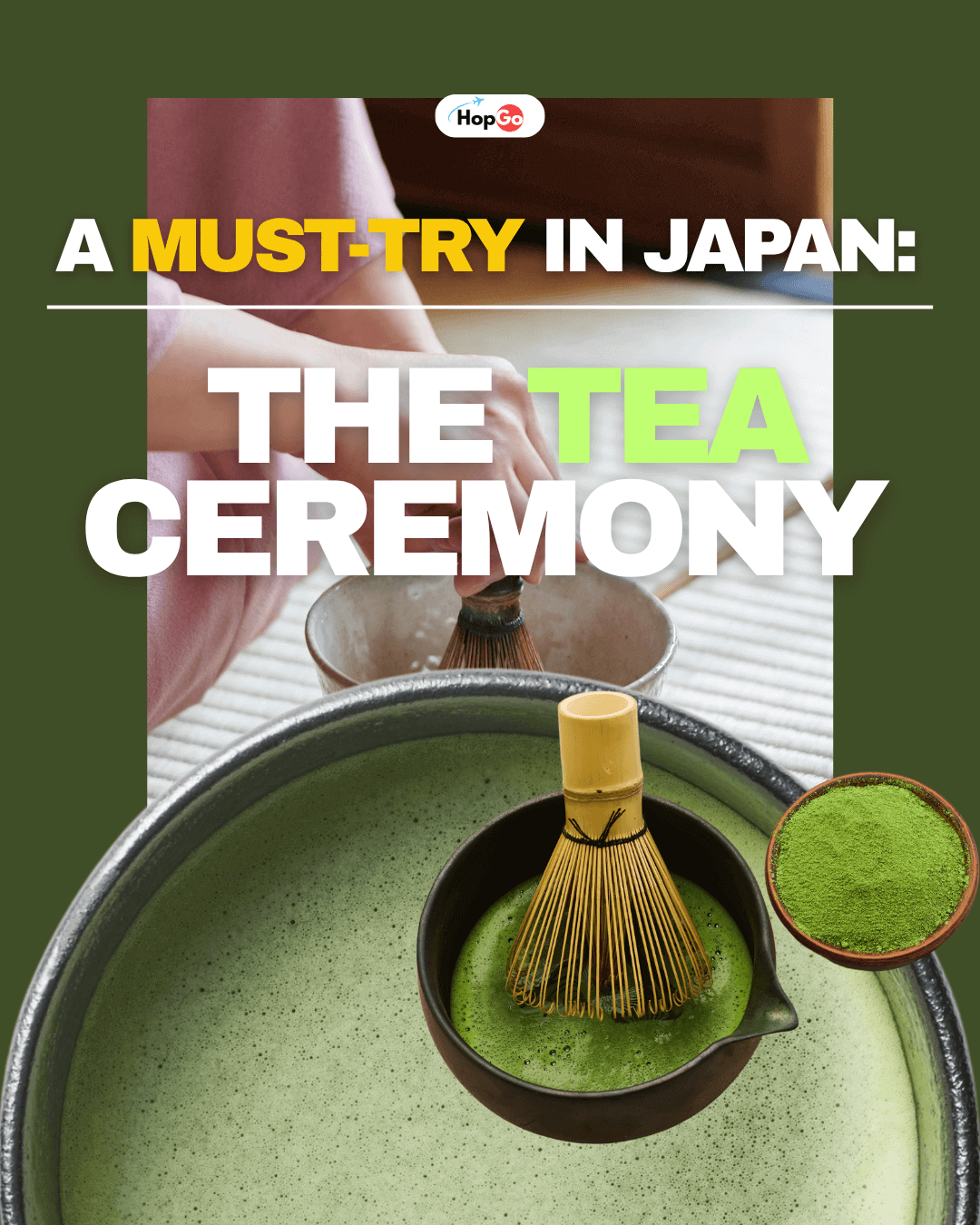
Origins and Spirit of the Tea Ceremony
The Tea Ceremony traces back to Zen Buddhism, evolving into one of Japan’s most iconic cultural traditions. In the 16th century, tea master Sen no Rikyū shaped the philosophy of wabi-sabi — finding beauty in simplicity and imperfection.
The core values of “harmony, respect, purity, and tranquility” guide every movement. From bowing at the entrance to carefully holding the tea bowl, each gesture is a reminder to slow down, appreciate the moment, and connect sincerely with others.
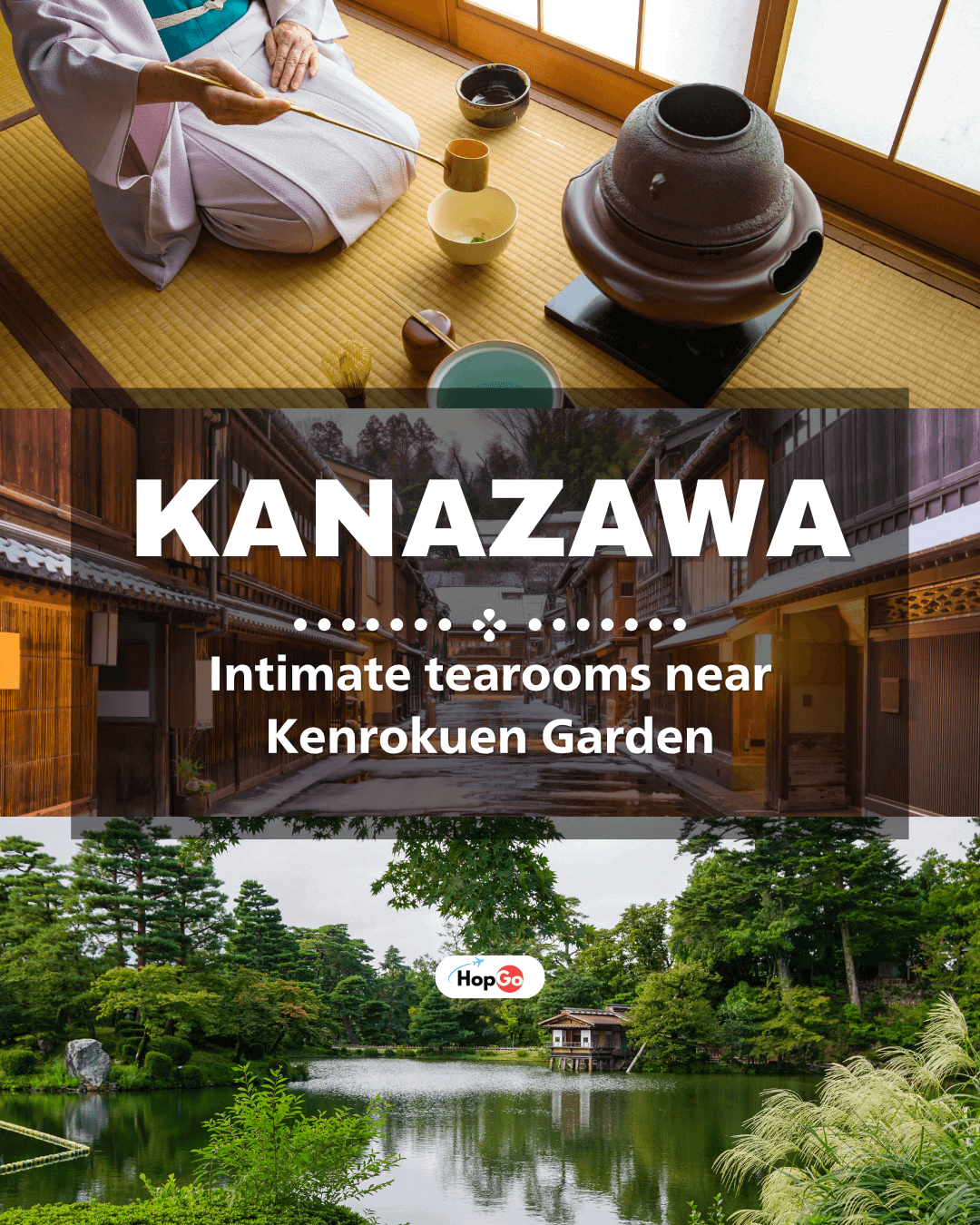
What Happens in a Tea Ceremony?
A standard tea ceremony takes about 45–60 minutes and unfolds as a journey of senses:
Welcoming – Remove shoes, bow, and enter the serene tearoom.
Admiring Utensils – Each tea bowl (chawan), whisk (chasen), and ladle carries its own artistry.
Preparing Matcha – The host whisks green tea powder into a smooth, frothy drink.
Tasting with Wagashi – Slight bitterness of matcha is balanced by seasonal Japanese sweets.
Closing Ritual – Guests bow and express gratitude before leaving.
Travel Tip: Tea ceremonies are especially popular in spring (cherry blossoms) and autumn (maple leaves). Book early to secure your spot.
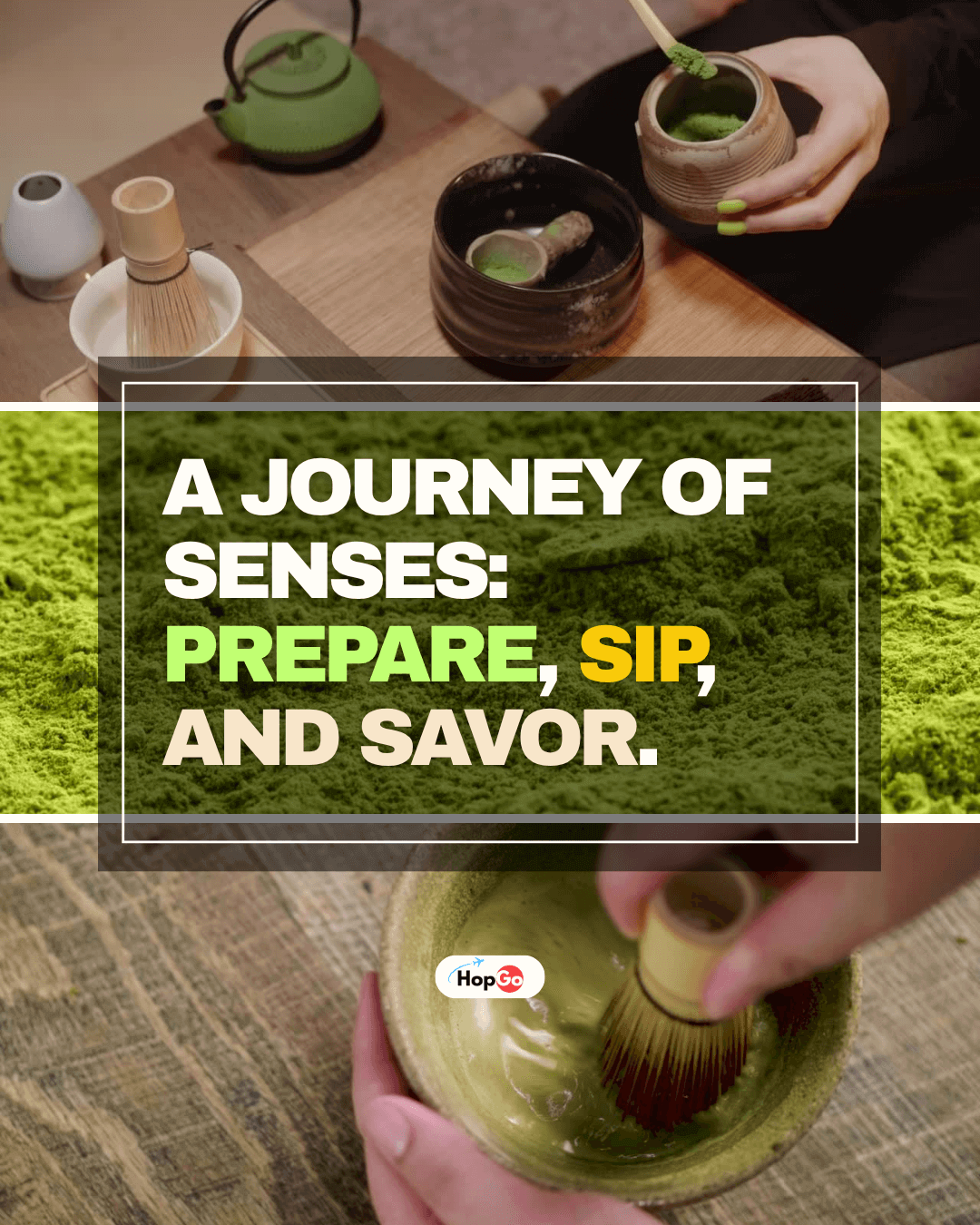
Where Can You Experience the Tea Ceremony?
Today, tea ceremony experiences are widely available across Japan — from famous cities to hidden gems. Here are some highlights:
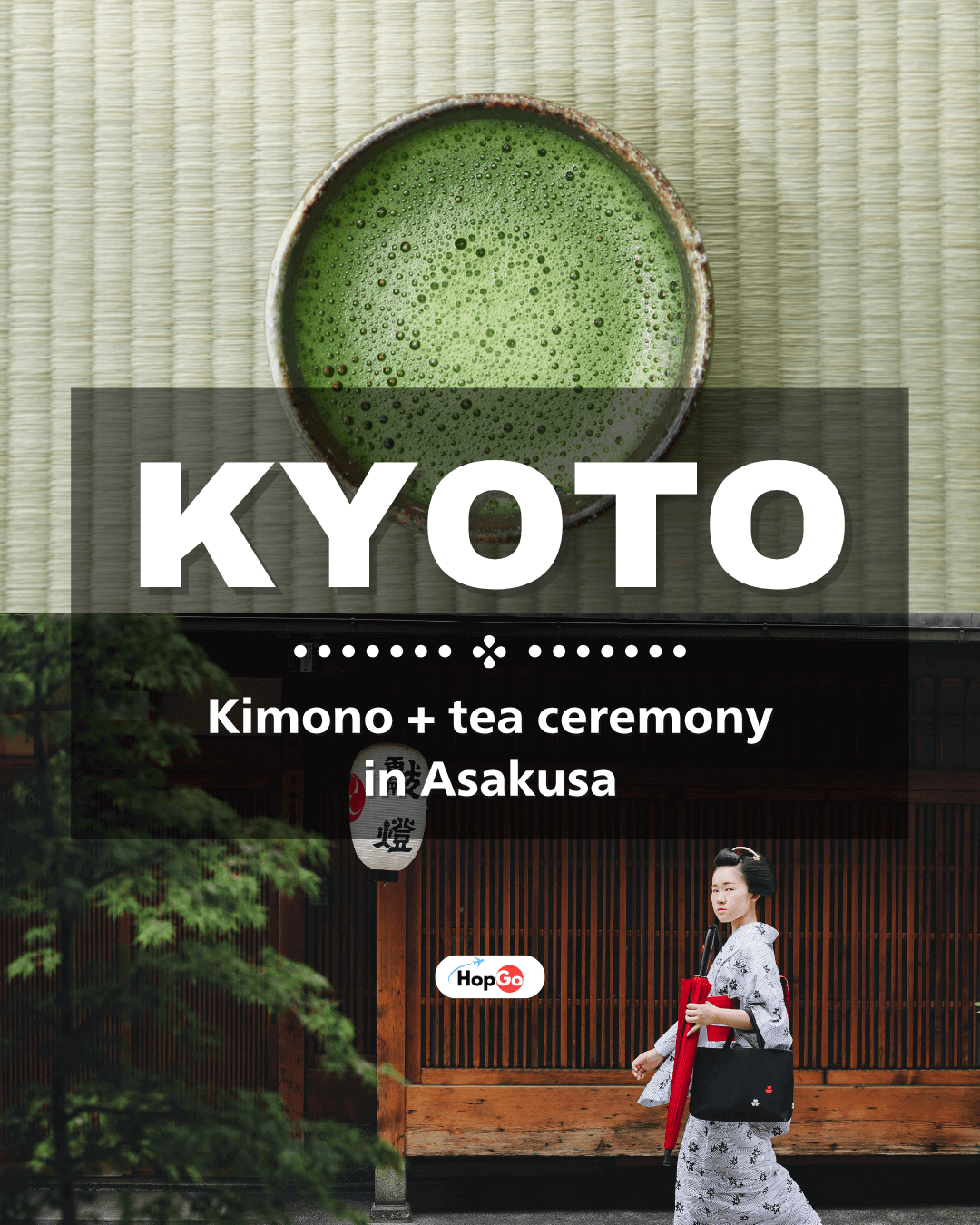
Kyoto Tea Ceremony
Known as the birthplace of the tradition, Kyoto offers authentic settings from Gion’s historic tea houses to temple tearooms such as Kennin-ji or Daitoku-ji. Slip into a kimono and step into a tea room — it feels like traveling back in time.
Tokyo Tea Ceremony
Perfect for travelers on tight schedules, Tokyo offers modern tea studios in Omotesando and cultural workshops in Asakusa that combine kimono dressing with the ceremony. Ideal for those who want culture and convenience in one package.
Kanazawa Tea Ceremony
Often called “Little Kyoto,” Kanazawa features charming tearooms around Kenrokuen Garden. Less crowded than major cities, this experience feels intimate, quiet, and deeply atmospheric.
Nara Tea Ceremony
As the cradle of Buddhism in Japan, Nara offers temple-based tea ceremonies that combine spiritual reflection with cultural immersion. It’s a rare chance to connect with Japan’s history in a very personal way.
Whether it’s your first visit to Japan or a return trip, a tea ceremony can fit perfectly into your itinerary. Explore in the morning, then pause in the afternoon with a bowl of matcha — a ritual that turns your journey into something truly memorable.
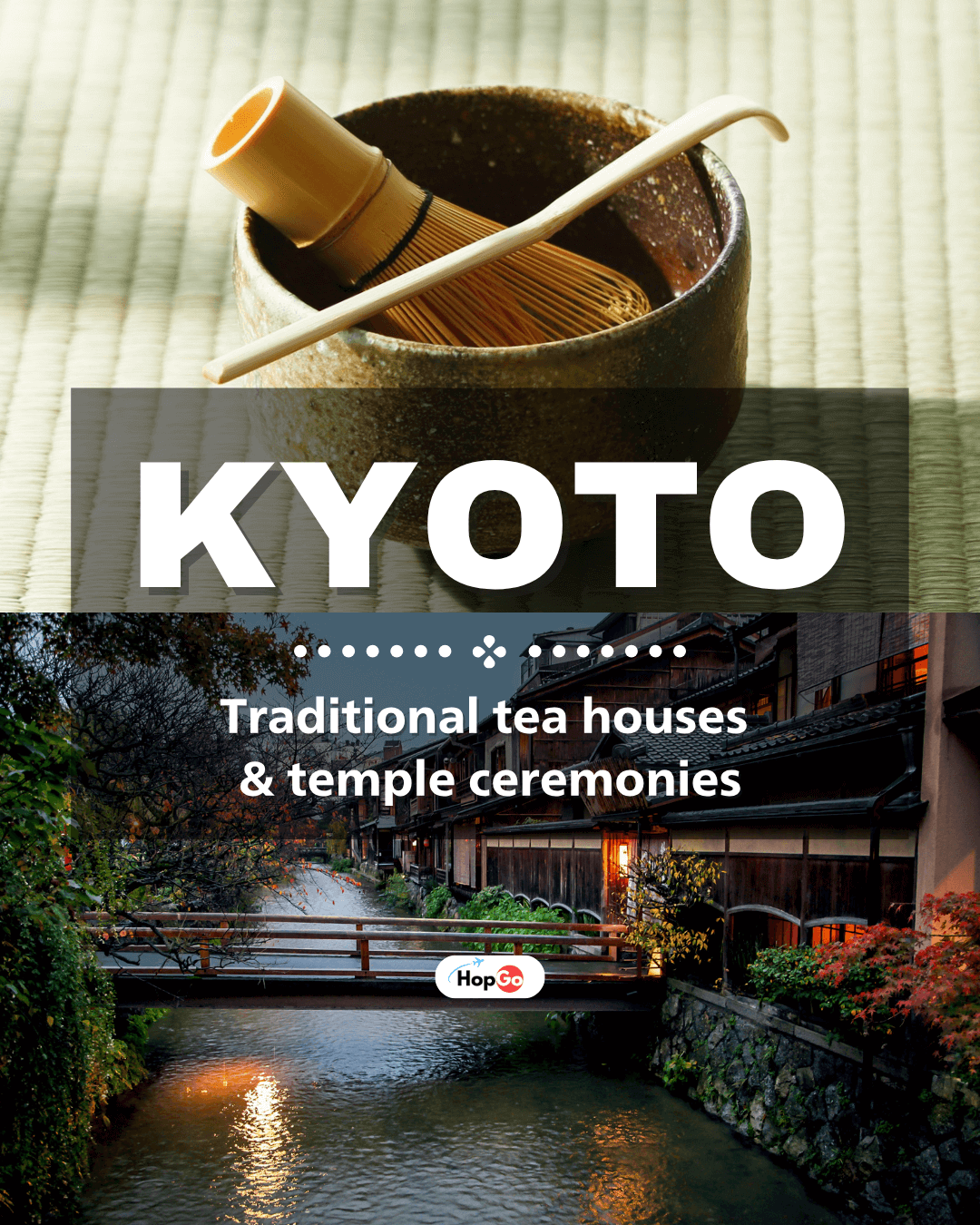
Why the Tea Ceremony is a Travel Highlight
Many travelers wonder: “It’s just tea, why should I do it?” The answer is that the Tea Ceremony goes far beyond drinking tea — it’s one of the most immersive cultural encounters you can have in Japan.
Cultural Depth
The Tea Ceremony condenses centuries of hospitality, aesthetics, and philosophy into one experience. It’s more impactful than simply reading about history — you live it.
Unique Atmosphere
Tearooms are often located in gardens, temples, or quiet side streets. The calm space, delicate utensils, and subtle fragrance of matcha help you step away from the rush of travel and enter a world of serenity.
Memorable Travel Photos
For many, this is also a picture-perfect moment. Wearing a kimono, holding a handcrafted tea bowl, framed by a traditional tearoom or garden — these photos capture the essence of Japan more uniquely than typical sightseeing shots.
The Tea Ceremony is a “slow moment” in your journey — one that invites you to pause, breathe, and embrace the heart of Japan.
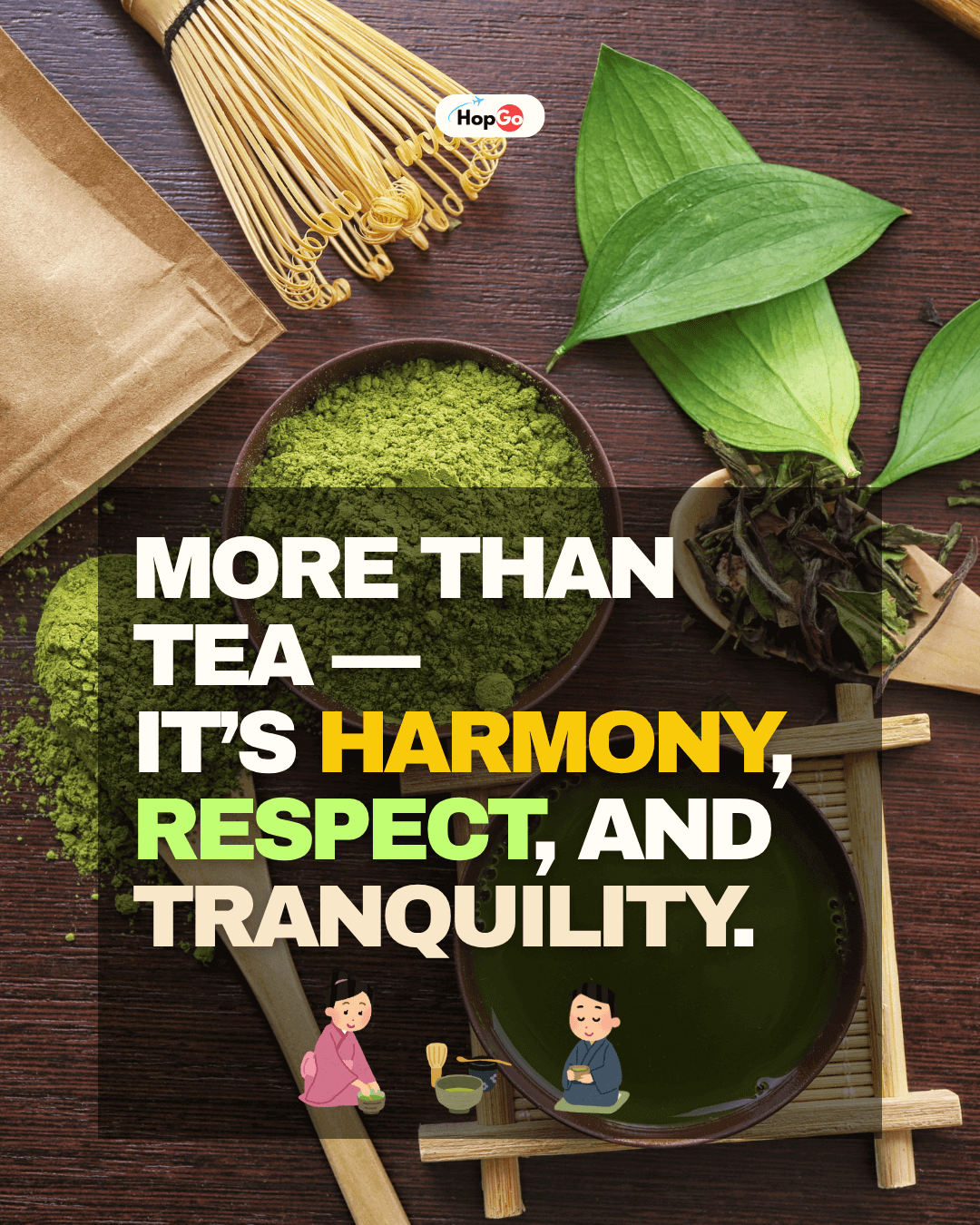
Suggested Itinerary Pairings (HopGo Private Journeys)
Kyoto: Morning at Kiyomizu-dera → Tea Ceremony → Kimono walk in Gion
Tokyo: Visit Asakusa → Tea Ceremony & Wagashi → Tokyo Skytree evening view
Kanazawa: Stroll Kenrokuen Garden → Tea Ceremony → Explore Samurai district
The Tea Ceremony is more than a cup of matcha — it’s a philosophy of life. It teaches us to slow down, appreciate the moment, and connect with others in respect and harmony.
For travelers seeking an authentic cultural encounter, this is an experience not to be missed.
HopGo offers private car services and tailor-made itineraries that seamlessly include tea ceremonies in Kyoto, Tokyo, Kanazawa, and beyond — ensuring your Japan journey is not only comfortable, but deeply memorable.
FAQ
Q:What is a Japanese Tea Ceremony?
A: The Japanese Tea Ceremony, also called sado or chado, is a traditional ritual where powdered green tea (matcha) is carefully prepared and served. Beyond drinking tea, it embodies Zen principles of harmony, respect, purity, and tranquility, offering travelers a deep cultural experience.
Q:How long does a tea ceremony take?
A: A standard tea ceremony usually lasts around 45–60 minutes. During this time, guests learn to appreciate each gesture — from admiring handcrafted tea utensils to tasting seasonal Japanese sweets (wagashi) alongside the frothy matcha.
Q:Where can I experience tea ceremonies in Kyoto and Tokyo?
A: Kyoto is the birthplace of the tea ceremony, with historic tearooms in Gion and temple-based experiences at Kennin-ji or Daitoku-ji. Tokyo offers modern studios in Omotesando and cultural workshops in Asakusa — perfect for travelers who want an authentic encounter while staying in the city.
Q:Can I wear a kimono during the tea ceremony?
A: Yes! Many tea ceremony experiences in Kyoto and Tokyo offer kimono rentals, allowing you to fully immerse yourself in the tradition. Wearing a kimono while holding a handcrafted tea bowl creates a truly memorable and photo-worthy moment of your Japan journey.



